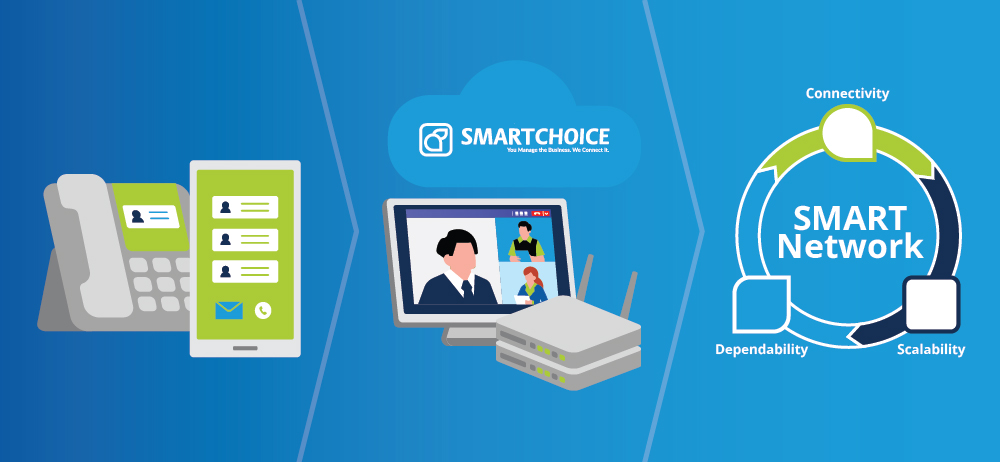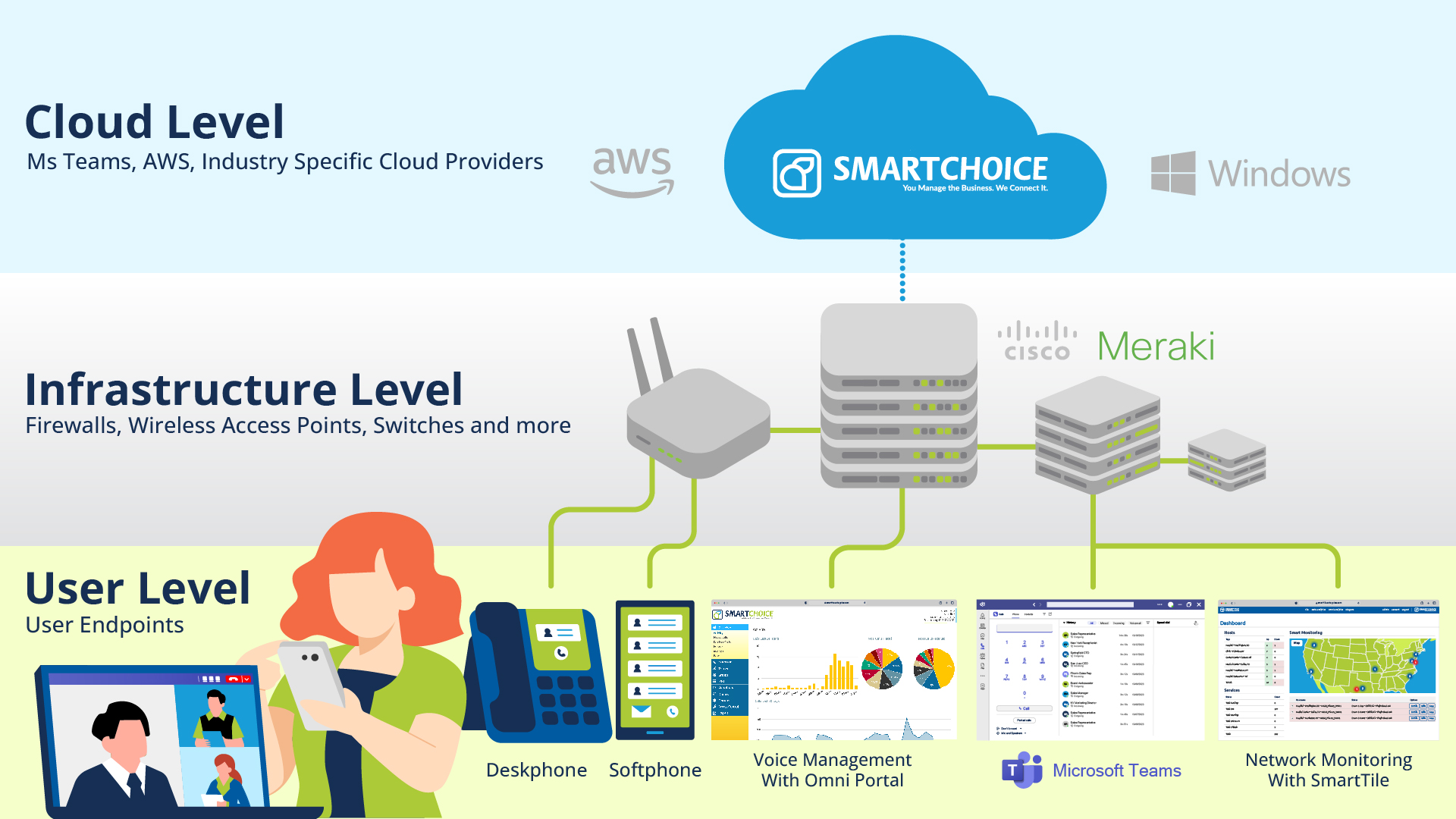A Flexible, Phased Approach to Cloud Voice Networks

Business communication has taken a leap forward with the advent of cloud technologies. As organizations strive for efficiency and adaptability, cloud-based systems offer a compelling solution. This post explores the functionalities of cloud communications, such as SMS capabilities, softphones, and Microsoft Teams integration, to shed light on how these technologies are transforming the business landscape.
What Are Cloud-Based Communication Systems?
Cloud communication systems integrate traditional telecommunication services with cloud technology, allowing businesses to manage their communication networks via the internet. These systems typically include voice, video, chat, and file sharing and collaboration services, providing a unified solution that can scale with the needs of any organization.
Key Functionalities
and Their Benefits
Cloud-based voice systems, often referred to as VoIP (Voice over Internet Protocol) systems, offer several benefits for businesses, making them a popular choice for modern communication needs. Here are some key advantages:
Scalability: Businesses can easily scale their voice systems up or down based on current needs without significant infrastructure changes. Adding or removing users can be done quickly through software configurations, which is ideal for growing companies or those with fluctuating demands.
Flexibility and Mobility: Users can access their business phone systems from anywhere with an internet connection. This is particularly beneficial for remote or mobile workforces, allowing employees to stay connected regardless of their location.
Advanced Features: Cloud-based voice systems come with a range of features that are not typically available with traditional phone systems, such as voicemail to email, auto-attendants, call forwarding, and integration with other business applications like CRM systems.
Reliability and Continuity: Many providers offer high uptime guarantees and redundancy, which means that even if one part of the network fails, the system can still function using other components. This is crucial for business continuity planning.
Easy Integration and Updates: These systems can integrate with other cloud-based applications, providing a seamless workflow across tools. Updates and new features are often rolled out automatically by the service provider without any need for manual intervention.
Enhanced Security: With the importance of data security, modern cloud-based systems often include robust security measures such as data encryption, secure voice and video, and compliance with regulations like HIPAA for healthcare providers.
Challenge for Large Enterprises to Upgrade Existing Systems
Large enterprises often face significant challenges when considering the elimination of their extensive, entrenched infrastructure to switch over to full cloud features. The complexity of existing systems, combined with the scale of operations, can make this transition seem daunting and risky. Concerns about disruptions, security, and cost are prevalent.
Phased Approach to
Cloud Integration
The unique challenges faced by large enterprises requires a more flexible and efficient solution with a phased approach to adopting cloud technologies. This approach allows businesses to gradually integrate cloud functionalities without overhauling their entire system at once.
Phase 1: Basic Integration – Starting with cloud-enabled SIP trunks to lay the groundwork. Keep existing infrastructure and ensure minimal disruption to daily operations. The user interface or experience is the same and businesses can maintain continuity without significant interruptions.
Phase 2: Incremental Addition of Cloud Features – Introducing functionalities like softphones, SMS and Microsoft Teams integrations, which enhance communication without requiring a complete infrastructure overhaul.
Phase 3: Full Transition – Once the enterprise is comfortable and ready, moving to a full cloud-based system that integrates all functionalities and phases out old systems.
This phased approach reduces the risk of operational disruptions and allows businesses to test and adapt to new technologies on their terms. SmartChoice Phased approach provides the flexibility to revert or adjust the scope of integration based on real-world experiences and feedback. The transition facilitated by a phased approach ensures minimal disruption with maximal flexibility, positioning them well for future growth and innovation.





